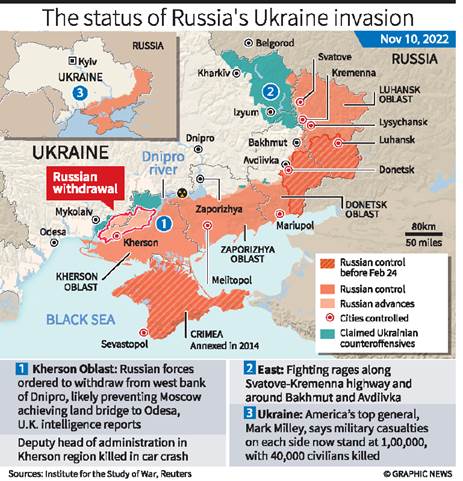Free Courses Sale ends Soon, Get It Now


Free Courses Sale ends Soon, Get It Now



Copyright infringement is not intended
Context: Ukraine’s defence and intelligence unit has reported on the withdrawal of Russian troops from Kherson but predicts it to be a delusion for a retreat. U.S. President Joe Biden and the EU leaders have termed the withdrawal as a “difficult position” for Russian President Vladimir Putin and condemned the brutality of deporting Ukrainians.
Details:
Where is Kherson and why is it important?
Why has Moscow announced its withdrawal from Kherson?
Is the withdrawal final, or a tactical move by Russia?
https://epaper.thehindu.com/ccidist-ws/th/th_delhi/issues/15096/OPS/GBEAGH0PO.1+G0DAGH7C2.1.html
© 2024 iasgyan. All right reserved